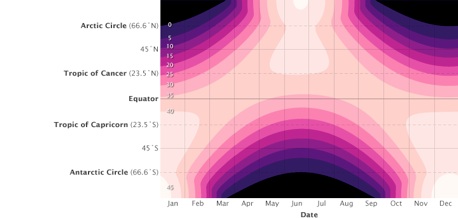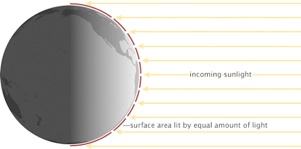

Energy from sunlight is not spread evenly over Earth. One hemisphere is always dark, receiving no solar radiation at all. On the daylight side, only the point directly under the Sun receives full-intensity solar radiation. From the equator to the poles, the Sun’ rays meet Earth at smaller and smaller angles, and the light gets spread over larger and larger surface areas (red lines). (NASA illustration by Robert Simmon.)


The total energy received each day at the top of the atmosphere depends on latitude. The highest daily amounts of incoming energy (pale pink) occur at high latitudes in summer, when days are long, rather than at the equator. In winter, some polar latitudes receive no light at all (black). The Southern Hemisphere receives more energy during December (southern summer) than the Northern Hemisphere does in June (northern summer) because Earth’s orbit is not a perfect circle and Earth is slightly closer to the Sun during that part of its orbit.

